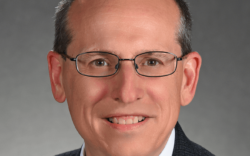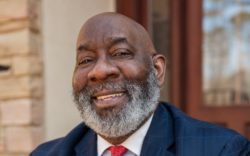The North Oconee River is Athenians’ greatest concern about downtown, according to the UGA College of Environment and Design.
Access to the river from downtown and development near the river is “by far the most prevalent theme we’ve heard,” in 926 survey responses and interviews, CED graduate student Justin Crighton told the Federation of Neighborhoods last week. He is part of a team of 14 students professor Jack Crowley assembled to write a master plan for downtown growth through 2030.
“It is a tremendous resource within close proximity to downtown, and it needs to be capitalized on,” Crighton said.
A river district has been on many residents’ minds since last year, when Athens-Clarke Economic Development Foundation members proposed several publicly funded riverside developments. The plan was scuttled when Atlanta developers Selig Enterprises bought an option on the Armstrong & Dobbs property off Oconee Street, a key parcel.
Crighton and fellow student Scott Pippin presented what they called a “concept of a concept” for the river, including more mixed-use development along East Broad and Hickory streets, greenspace, a plaza with an amphitheater, an extension of Strong Street to Willow Street and a new bridge across the river. Athens-Clarke County was criticized for closing a block of Hancock Avenue to expand the Classic Center.
“We’re trying to figure out a way to re-establish the grid,” Crighton said.
The concept doesn’t include Selig’s yet-to-be-filed plans for a much-criticized mixed-use development. “I’m encouraging them to plan for what’s on the ground now,” Athens-Clarke Commissioner-elect Jerry NeSmith said.
Another preliminary concept called for moving senior housing at Denney Tower to the Athens Community Council on Aging and redeveloping that land as residential and retail, and redeveloping Athens Housing Authority property on College Avenue along a planned Pulaski Creek greenway (though not the privately owned Bethel Midtown Village).
Dougherty Street drew a number of complaints from audience members about how difficult it is to navigate on foot or by bike. “That’s awful over there,” Sharon Bradley said. “I call it the corridor of terror.”
The “hard edges” around downtown have come up a number of times, Pippin and Crighton said. The streets that border downtown, such as Broad, Dougherty and Pulaski, are difficult to cross, making the area harder to get to for pedestrians and cyclists, they said.
Another attendee, Wendy Moore, said the concepts are too focused on new development. Businesses are moving to the Eastside, and downtown has enough vacant storefronts and office space as it is, she said. “We’re losing more and more well-established places,” she said.
Other issues raised have included parking, safety, public transit, historic preservation and the need for a grocery store, more family spaces and more housing for non-students.
The CED team has been meeting quietly with various downtown stakeholders for a couple of months. Surveys can also be filled out online. A public hearing is tentatively scheduled for Tuesday, Nov. 27 at the Classic Center, with a second one likely to follow, and a draft plan will be released this spring.
Like what you just read? Support Flagpole by making a donation today. Every dollar you give helps fund our ongoing mission to provide Athens with quality, independent journalism.









